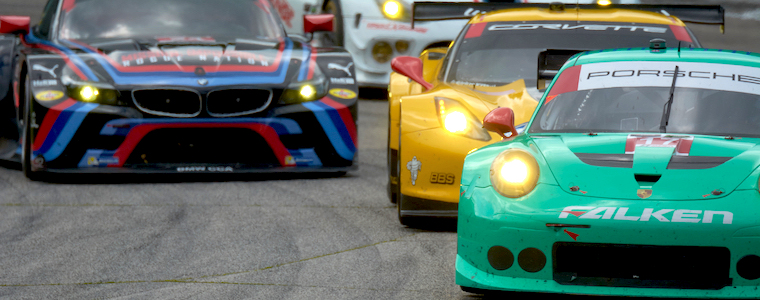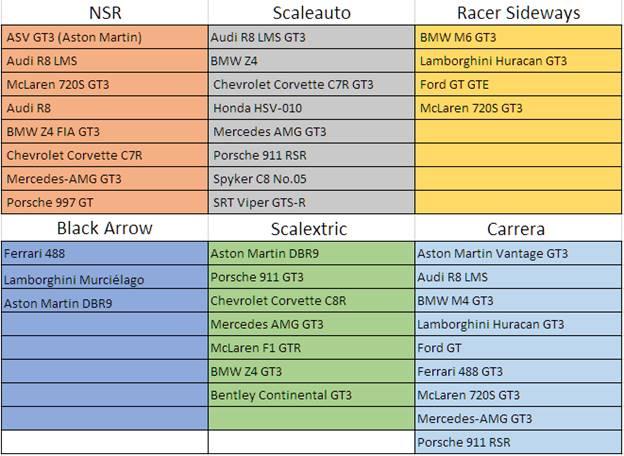
Group GT3, known technically as Cup Grand Touring Cars and commonly referred to as simply GT3, is a set of regulations maintained by the Fédération Internationale de l’Automobile (FIA) for grand tourer racing cars designed for use in various auto racing series throughout the world. The GT3 category was initially created in 2005 by the SRO Group as a third rung in the ladder of grand touring motorsport, below the Group GT1 and Group GT2 categories which were utilized in the SRO’s FIA GT Championship, and launched its own series in 2006 called the FIA GT3 European Championship. Since then, Group GT3 has expanded to become the de facto category for many national and international grand touring series, although some series modify the ruleset from the FIA standard. By 2013, nearly 20 automobile manufacturers have built or been represented with GT3 machines.
Group GT3 allows for a wide variety of car types to be homologated with almost no limit on engine sizes and configurations or chassis construction or layout. GT3 cars must be based on mass production road car models that are being built and sold at the time of homologation. Performance of all the Group GT3 cars are regulated, either by the GT Bureau of the FIA or by a series’ specific ruling body, through Balance of Performance formulae that adjusts limits on horsepower, weight, engine management, and aerodynamics to prevent a single manufacturer from becoming dominant in the class. The cars in GT3 are designed to have a weight between 1200 kg and 1300 kg (2645 lbs and 2866 lbs) with horsepower between 500 hp and 600 hp. All cars have a very similar power to weight ratio but achieved either by high power and high weight such as the Mercedes-Benz SLS AMG[2] or low power and low weight such as the Porsche 911 GT3. GT3 cars also have traction control, ABS, and built-in air jacks for quick pit stops.
- Any GT car that raced after January 1st, 2010 with a base production of 100 or more.
Body and Chassis
- Body may be injection molded or resin, marketed as 1/32 scale.
Chassis and body do not have to be naturally mated RTR set from the same manufacturer. - Podded & universal chassis are allowed.
- Chassis may be braced, reinforced or strengthened.
- Body screws can be taped to prevent loss.
- Chassis may be modified to accept front axle mounts (SCC) or guide modifiers (B-NOVA).
- Guide may not project beyond the body when aligned for straight, as viewed from directly above.
- Cars must have sufficient ground clearance to permit free running without contacting track.
- Cars which drag on the track may be excluded at the series manager discretion.
- Clear window material must be used where the real car has clear material.
- Racing numbers must be visible in three places on body. Racing numbers must match.
- Bodies may be painted in fantasy or realistic liveries.
- Non-decorated cars (for example plain white kits) are not allowed.
- Interior must include, at minimum, dashboard top. Rear shelf is required under rear window, if car has a rear window.
- Driver figure must be included. If vacuum formed, must be of reasonable detail and proportion. Champion style and paper drivers are not permitted.
Wheels and Tires
- Tires may not project beyond the body when the car is at rest on a level track, as viewed from directly above.
- Reasonable scale appearing inserts are required in all wheels, unless the wheels have scale appearance and detail – to be determined by the series manager.
- Minimum wheel size is nominal 15mm diameter over center-rib, or a scale 16″ (.500″) diameter over visible part of rim with tire mounted (simulating a nominal 15″ wheel), unless actual car raced with smaller wheels.
- F1 style wheels are not allowed, unless the actual car raced with 13″-14″ nominal diameter rims.
- Minimum front tire width is 7mm. Front tires may be profiled so that a narrower area contacts the track, but must otherwise be full width.
- Maximum rear tire width is 12mm.
- Front tires may be of any rubber/urethane compound.
- Clear finish may be applied to the front tire tread area.
- Silicon tires are expressly forbidden.
- Tires must appear to be black.
- No chemical treatment (such as oil soaking) is permitted.
Motors
- Any commercially available sealed-can slot car motor is allowed. No rewinds or “mod motors” allowed.
- Magnetic down force from motor may not exceed 30 grams as checked with a Magnet Marshal, exclusive of car weight.
- Motor can be glued/taped/screwed in place. Pods can be taped or glued to restrict movement.
Modifications
- Wheels, tires, gears, axles, guides, braids, wires, and bearings may be modified or replaced by any manufacturer’s parts that are readily available to all competitors. All-wheel drive, and multiple motors, may be used only if the actual car used them.
- Weight/ballast can be added to the car but must be contained on the inside of the body.
- Spring and magnetic suspension packages are allowed.
- No traction magnets allowed.
Track Power
- The series will be raced at 12 Volts.
General
- If it is not mentioned it is not legal.
- These rules were written to create a fair event and not for racers to look for loopholes.
Model list
If you want to run something I missed please let me know and I will add it to the list If it meets race rules.

